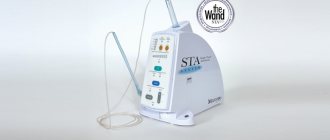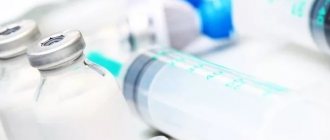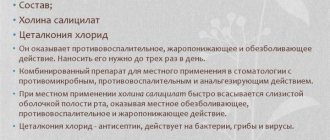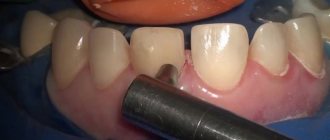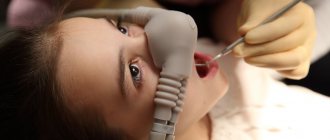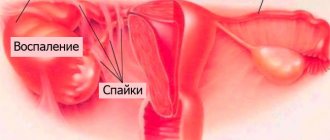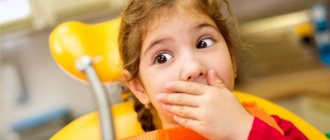From this article you will learn:
- What does Lincomycin help with?
- Lincomycin capsules – price 2022,
- how to use Lincomycin in dentistry and for the treatment of purulent-inflammatory diseases.
The article was written by a dentist with more than 19 years of experience.
Lincomycin is an antibiotic of the lincosamide group, which is quite outdated and does not have a wide spectrum of antimicrobial action. The advantages of this antibiotic are its low price, as well as its effectiveness in treating infection resistance to penicillin antibiotics. Remember that this is a prescription drug that should be used only as prescribed by a doctor, and in addition, lincomycin is strictly contraindicated for pregnant and lactating women, as well as children under 12 years of age.
The antibiotic Lincomycin in dentistry at one time found quite wide use, which was due to its relative affinity for bone tissue. However, it is unlikely that any sane dentist will now decide to prescribe lincomycin for dental implantation or gum inflammation. The range of indications for the use of Lincomycin in dentistry is, as a rule, limited to its purpose - either after a complex tooth extraction, or during tooth extraction due to inflammation, or with purulent periostitis of the jaw (i.e. gumboil).
Lincomycin capsules, ampoules –
If anyone is interested, the chemical formula of lincomycin is as follows: (2S, 4R)-N-[(1R, 2R)-2-hydroxy-1-[(2R, 3R, 4S, 5R, 6R)-3, 4,5-trihydroxy-6-(methylsulfanyl)oxan-2-yl]propyl]-1-methyl-4-propylpyrrolidine-2-carboxamide. In this article we will talk about the optimal indications for the use of Lincomycin, as well as how to avoid the risk of developing a complication almost traditional for lincosamide antibiotics - antibiotic-associated diarrhea.
pharmachologic effect
An antimicrobial agent that belongs to the group of lincosamides. Its bacteriostatic effect is noted in relation to a wide range of microorganisms. If higher doses of the drug are used, it may produce a bactericidal effect.
The mechanism of the antimicrobial effect of the antibiotic is as follows: under its influence, protein synthesis is inhibited in the cells of microorganisms. It has pronounced activity against gram-positive anaerobic and aerobic microorganisms. Resistance to the influence of the drug is demonstrated by strains of Enterococcus faecalis, as well as viruses, fungi, and protozoa. Most gram-negative microorganisms are also resistant to it. Slow development of resistance to this drug has been noted. Cross-resistance of this substance with clindamycin has been noted.
Pharmacokinetics and pharmacodynamics
After oral administration, lincomycin hydrochloride is rapidly absorbed from the gastrointestinal tract. About 50% of the substance enters the systemic circulation. It is 75% bound to plasma proteins, the highest concentration is observed 2-4 hours after oral administration. The substance penetrates into fluids and organ tissues. The highest concentrations are observed in saliva, kidneys, genitals, liver, heart muscle, bone tissue, and bronchial secretions. Able to penetrate the blood-brain barrier, it is excreted in breast milk. Metabolism mainly occurs in the liver, it is excreted from the body in feces, a small amount is also excreted in the urine as metabolites and unchanged. The half-life from the body is 5-6 hours, it increases in people suffering from kidney disease.
Indications for use of Lincomycin
Lincomycin tablets and Lincomycin injections are prescribed for the following diseases:
- diseases of the bones and joints of an infectious nature, the development of which was provoked by microorganisms sensitive to the drug ( osteomyelitis , septic arthritis );
- infectious diseases of the ENT organs and respiratory tract, provoked by sensitive microorganisms (used for sore throat , sinusitis , otitis , bronchitis , pneumonia , tracheitis , etc.);
- diseases of the skin and soft tissues, which are provoked by microorganisms sensitive to the product ( abscess , purulent wounds , mastitis , furunculosis , erysipelas , etc.).
- Lincomycin-AKOS is used externally for inflammatory and purulent diseases of soft tissues and skin, which were caused by microorganisms sensitive to the active ingredient.
Lincomycin is used in dentistry to treat purulent and infectious processes that occur in the oral cavity. In particular, Lincomycin in dentistry can be prescribed for the treatment of periodontitis , periodontitis , gingivitis , purulent abscesses , etc. Whether there are indications for the use of Lincomycin is determined by the dentist individually.
Experience in the use of combination drugs in the treatment of rhinitis and sinusitis in children
The incidence of sinusitis is still quite high. According to various authors, diseases of the nose and paranasal sinuses affect from 17 to 22% of the child population. One of the significant factors in the pathogenesis of acute and especially chronic inflammatory diseases of the nose and paranasal sinuses is a violation of the mechanism of mucociliary transport. This is most often associated with swelling of the mucous membrane, excessive formation and increased viscosity of nasal secretions, which entails a disorder of drainage, respiratory, secretory and olfactory functions. The most common treatment for sinusitis is oral or intramuscular antibiotics. Since the supply of antibiotics from the bloodstream to the site of inflammation is limited, the treatment of sinusitis must be comprehensive.
First of all, this should concern improving ventilation, as well as drainage of the paranasal sinuses and nasopharynx.
Until now, otolaryngologists do not always practice prescribing adequate mucoregulating drugs included in the treatment regimen for patients with sinusitis, which, by thinning the thick viscous secretion and improving mucociliary clearance, help remove secretions from the sinuses. Among the drugs that affect mucociliary activity, previously used drugs that stimulate the liquefaction of rhinobronchial secretions, or so-called mucolytics, which change the viscosity of the secretion, affecting its physicochemical properties. We are talking about enzymes (trypsin, chymotrypsin, etc.), which are not currently used due to side effects.
Drugs that reduce surface tension also have a mucolytic effect, i.e., they act on the gel phase of the discharge and dilute both sputum and nasopharyngeal secretions. This group includes fluimucil (N-acetylcysteine), the action of which is associated with the ability of the free sulfhydryl group of N-acetylcysteine to cleave the intermolecular disulfide bonds of mucus glycoprotein aggregates, exerting a strong liquefying effect and reducing viscosity in relation to any type of secretion: purulent, mucopurulent, mucous . The peculiarity of fluimucil is that in addition to the direct mucolytic effect, N-acetylcysteine has powerful antioxidant properties and is able to protect the respiratory system from the cytotoxic effects of inflammatory metabolites, environmental factors, and tobacco smoke.
In the group of mucolytics, combination drugs are of great interest, namely rhinofluimucil, which, in addition to N-acetylcysteine, which dilutes the secretions, includes a sympathomimetic - tuaminoheptane sulfate, which has a mild vasoconstrictor effect and does not cause excessive dryness of the mucous membrane. After the disulfide bridges break, mucus and phlegm lose their viscosity, begin to absorb water and are gently removed when blowing the nose, sneezing, or coughing. Indications for the use of rinofluimucil are:
- prolonged purulent sinusitis with viscous thick secretion;
- chronic rhinitis with the formation of crusts in the nasal cavity and nasopharynx;
- vasomotor rhinitis with thick viscous discharge.
The effectiveness of the drug was assessed in a group of 55 patients aged 6 to 14 years; rinofluimucil was injected one dose into each half of the nose 3-4 times a day, the course was 6-7 days. The condition of the children was assessed by their subjective feelings before and after using the drug, as well as by objective criteria (reduction of hyperemia and congestion in the mucous membrane, improvement of nasal breathing, reduction of mucus, change in its rheological properties).
After 6-8 inhalations of rhinofluimucil, positive dynamics were noted.
The result of using the drug was assessed as follows: 70% of patients - excellent; 20% - good; 10% - satisfactory.
| Drawing. Comparative results of treatment with the antibiotic fluimucil IT and traditional methods |
There were no side effects from the use of the drug. The advantage of rhinofluimucil is that it acts on the surface of the mucous membrane and, by thinning the mucus, reduces its viscosity and promotes the productive physiological act of cleansing the nasal cavity.
The next drug that you should pay attention to is the fluimucil antibiotic IT, which combines two components in one dosage form: N-acetylcysteine and thiamphenicol glycinate (thiamphenicol is a drug from the chloramphenicol group). The spectrum of antimicrobial activity of the drug is presented in table. 1 (Clinical pharmacology of antibacterial drugs/Ed. Yu. B. Belousov, 1988).
The drug has a combined antibacterial and mucolytic effect and is recommended for the treatment of respiratory diseases caused by bacterial infection and accompanied by the formation of a thick viscous secretion. The antimicrobial activity of thiamphenicol is due to its interference with the synthesis of bacterial proteins. Recent studies have shown that the combination of thiamphenicol and N-acetylcysteine allows the drug to retain its unconjugated form and reach the site of inflammation in concentrations sufficient to create a bactericidal effect. The drug exhibits mucolytic activity against any type of secretion - mucous, mucopurulent, purulent. Fluimucil antibiotic IT facilitates the separation of sputum and nasal mucus. The drug is effective when administered into the paranasal sinuses.
We have data on treatment with the drug fluimucil-antibiotic IT in 37 children, of which 17 were diagnosed with acute sinusitis, 10 with exacerbation of chronic sinusitis and 10 with exacerbation of chronic purulent sinusitis. The control group of patients was treated using the traditional method without the use of fluimucil antibiotic. Comparative data is presented in the figure.
The drug was used for washing the paranasal sinuses after punctures or after surgery, including after endonasal opening of the ethmoidal labyrinth cells. Good results were obtained after 2-3 rinses: nasal breathing improved, swelling of the nasal mucosa decreased, the amount of secretion decreased, and its purulent nature disappeared. Indications and methods of use of the drug are presented in table. 2.
The effectiveness of the IT antibiotic fluimucil is determined not only by its antibacterial effect, but also by its ability to ensure rapid and complete removal of exudate, which in turn enhances the antibacterial effect.
Literature
- Ammosova S.P., Chuchalin A.G. et al. The effectiveness of N-acetylcysteine therapy in the treatment of liquidators of the Chernobyl accident with chronic bronchitis.
- Balyasinskaya G. L., Minasyan V. S., Kachkaeva E. D. The use of rinofluimucil in the treatment of rhinitis in children: Collection of works of the department. M., 2001. pp. 162-165.
- Garashchenko T. I., Bogomilsky M. R., Radtsig E. Yu. Mucoactive drugs in the treatment of non-purulent diseases of the middle ear: Collection of works of the department. M., 2001. pp. 157-162.
- Levin A. R., Zaitseva O. V., Vykhristyuk O. F., Kasyanov E. N. Results of the use of acetylcysteine in the complex treatment of children with bronchopulmonary diseases // Pediatrics. 1995. No. 5. P. 66-68.
- Sinopalnikov A.I., Klyachkina I.L. The place of mucolytic drugs in the complex therapy of respiratory diseases // Russian Medical Bulletin. No. 4. pp. 9-10.
- Samsygina G. A. et al. Experience in the use of acetylcysteine in the treatment of acute and chronic respiratory diseases in children // Pediatrics. 1995. No. 3. P. 76.
- Rizzata J. Aerosol antibiotics for the treatment of respiratory infections. The focus is on thiamphenicol glycinate acetylcysteinate. Publishing house "Mattioli", 1985, Therapist, 2001. No. 9. P. 1-6.
Note!
Fluimucil antibiotic IT has the following pharmacological and therapeutic properties:
- High bioavailability of the drug.
- High antibacterial activity, which is achieved thanks to a special dosage form.
- High mucolytic activity, ensuring the restoration of mucociliary clearance and the removal of pathological microorganisms.
- By creating a high therapeutic concentration of both an antibiotic and N-acetylcysteine in the affected organs.
Side effects
When using Lincomycin in ampoules and capsules, patients may experience the following side effects:
- dysfunctions of the gastrointestinal tract ( vomiting , pain, nausea , stool disorders, increased activity of liver enzymes, esophagitis , hyperbilirubinemia );
- disorders of the hematopoietic process ( thrombocytopenia , agranulocytosis , neutropenia , pancytopenia );
- allergic processes ( skin itching , urticaria , rash , swelling erythema multiforme , anaphylactic shock );
- muscle weakness, headaches , arterial hypertension , dizziness .
If you experience any side effects, you should immediately tell your doctor about it.
Instructions for use of Lincomycin (Method and dosage)
If the patient has been prescribed Lincomycin injections, the instructions for use must be carefully followed during the treatment process. The drug in ampoules can be administered intravenously and intramuscularly. The daily dose of the drug for an adult patient should be no more than 1.8 g; if the disease is severe, the doctor can increase it to 2.4 g. The drug is administered three times a day, with the interval between injections being 8 hours. For children, the drug should be administered at a dose of 10-20 mg per 1 kg of body weight per day. Lincomycin is administered intravenously by drip; before administration, the solution is diluted with an isotonic sodium chloride solution.
For infectious diseases, Lincomycin capsules are also prescribed. The instructions for use recommend taking the drug in capsules for sore throat, as well as for sinusitis, either 1 hour before a meal, or 2 hours after taking it. The tablets cannot be chewed, they must be swallowed whole with plenty of liquid. The drug in tablets should be taken at regular intervals, dividing its daily dose. For children whose body weight exceeds 25 kg, the daily dose should be determined at the rate of 30 mg of the drug per 1 kg of weight.
When using the medicine in dentistry, as well as in the treatment of other infectious diseases, as a rule, Lincomycin is prescribed 500 mg three times a day. For severe symptoms, the dose can be increased to 500 mg of the drug four times a day. As a rule, the course of treatment lasts from 1 to 2 weeks. Sometimes the duration of treatment is up to 3 weeks (for example, with osteomyelitis ). If the patient has liver or kidney dysfunction, the dose should be adjusted individually.
Lincomycin ointment is prescribed externally. The instructions for use indicate that Lincomycin-AKOS ointment should be applied directly to the affected area in a thin layer. This procedure must be done 2-3 times a day.
Lincomycin capsules - dosage regimen, reviews
Lincomycin for oral administration is available in 250 mg capsules and is a prescription drug that should only be used as directed by a doctor. The regimen for use in children over 12 years of age and adults is 2 capsules 3-4 times a day (the duration of administration is determined by the doctor, but usually from 5 to 7 days). In younger children and pregnant and lactating women, taking the drug is prohibited.
The drug should be taken only on an empty stomach - approximately 1-1.5 hours before meals (below we will tell you what this is connected with). And this may be inconvenient, but according to the instructions - you should only take Lincomycin capsules with a full glass of water! Failure to comply with this rule will affect the effectiveness, as well as the already low safety of the drug.
Contents of one capsule of Lincomycin:
→ Lincomycin: official instructions for use (download in PDF)
Reviews of lincomycin capsules:
Most modern antibiotics have high bioavailability (absorbed from the intestines quickly and completely), which, for example, allows them to be taken after meals. Taking lincomycin capsules 1.5 hours before meals is associated with low bioavailability of the drug - even when taken on an empty stomach, no more than 30% of the active substance is absorbed from the intestines. At the same time, simultaneous food intake reduces the absorption of lincomycin in the intestine - only up to 5% of the active substance.
Those. simultaneous ingestion of food reduces the effectiveness of lincomycin by 4-5 times, and at the same time, the antibiotic that is not absorbed from the intestine continues to kill all beneficial microflora in the intestine. Poor bioavailability of lincomycin and the inability to combine its intake with food often cause the development of antibiotic-dependent diarrhea in patients. Therefore, a drug such as Lincomycin capsules should be taken only in parallel with taking probiotics.
How effective is Lincomycin as an antibiotic?
Scientific studies show that lincomycin shows good effectiveness only in 36.8% of cases, while in 63.2% of cases, pathogenic bacteria at the site of inflammation have only weak sensitivity to lincomycin. But if you have long-term inflammation (and especially if you have already taken courses of Lincomycin in the past), the effectiveness will be worse.
The same study showed that when it comes to long-term foci of inflammation in the area of tooth roots (for example, in the presence of a fistula, granuloma/cyst), lincomycin will be effective only in 19% of cases. At the same time, in 47.6% of cases, Lincomycin demonstrates only weak effectiveness, and in the remaining 33.4% of cases, patients have complete resistance of the microflora in the inflammation site to lincomycin (it forms especially quickly in staphylococci).
Taking probiotics with Lincomycin:
Antibiotics of the lincosamide group are very often the cause of antibiotic-dependent diarrhea. If you have previously experienced diarrhea while taking antibiotics, or you have dysbiosis or other gastrointestinal diseases, in this case we do not recommend that you take antibiotics such as Lincomycin or Clindamycin. To reduce the risk of diarrhea, as well as reduce the negative impact of the antibiotic on the intestinal microflora, parallel intake of probiotics will help (these drugs contain bacteria beneficial to the intestines). For example, these could be Linex or Bifiform - they are the best, but also the most expensive. However, even simpler probiotics will provide benefits.
Probiotic Bifiform (30 capsules) –
Summary: all this makes the prescription of lincomycin acceptable, for example, when opening a purulent abscess on the gum (flux), as well as when removing a tooth with a purulent granuloma at the root apex. Acceptable simply because in these cases we drain the purulent focus and allow the outflow of pus, and antibiotic therapy in these situations is of secondary importance. But the prescription of lincomycin in the process of treating an exacerbation of chronic periodontitis, or to simply suppress inflammation - all this is ineffective and harmful.
Interaction
If an antibiotic is used at the same time as non-steroidal anti-inflammatory drugs, the patient is more likely to develop respiratory failure and may experience respiratory arrest.
Taking Lincomycin and antidiarrheals simultaneously increases the likelihood of developing pseudomembranous colitis.
You cannot treat with the drug at the same time as using muscle relaxants and inhalational anesthetics.
Antibiotic absorption is reduced when taking adsorbent drugs simultaneously.
Lincomycin reduces the severity of the action of neostigmine , pyridostigmine , ambenonium .
The bacteriostatic effect of the antibiotic is reduced by simultaneous administration of Erythromycin and chloramphenicol .
Pharmaceutical incompatibility with kanamycin , novobiocin , and ampicillin .
Side effects and contraindications –
Lincomycin cannot be used during pregnancy, because the drug has a toxic effect on the fetus. In addition, it penetrates well through the placenta (the concentration in the fetal blood will be about 25% of the concentration in the maternal blood serum). Therefore, pregnant and lactating women should not use any form of lincomycin, including ointment.
You should also not take the drug if you have intestinal diseases (colitis, enteritis, ulcerative colitis), or if you have allergic reactions to lincosamides or doxorubicin. If symptoms of pseudomembranous colitis (diarrhea) develop while taking lincomycin, it is necessary to urgently discontinue the drug and begin specific treatment. The latter may include prescribing a tablet. Metronidazole or Vancomycin.
Our portal has a separate article devoted to the use of antibiotics in dentistry. A detailed list of the most effective drugs for inflammation of teeth and gums can be seen at this link.
Lincomycin: drug analogues
A semisynthetic analogue of lincomycin is another antibiotic of the lincosamide group - the drug Clindamycin. It should be noted that this drug also has a fairly narrow spectrum of antimicrobial action, but its effectiveness against some types of microorganisms will be 2-10 times higher - compared to lincomycin. Another advantage of this drug is that its absorption in the intestine does not depend on food intake (lincomycin can only be taken on an empty stomach, 1-1.5 hours before meals).
The price of Clindamycin starts from 150 rubles (for a package of 16 capsules of 150 mg). Dosage regimen: 1 capsule 4 times a day, duration of administration is determined by the doctor. To summarize, the effectiveness of clindamycin will be only slightly higher, but taking the drug will be much more convenient. However, the risk of developing pseudomembranous colitis when taking clindamycin will be higher than when taking lincomycin. And remember that antibiotics should not be taken without a doctor's prescription. We hope that our article was useful to you!
Sources:
1. Dental education of the author of the article, 2. Personal experience as a maxillofacial surgeon, dental surgeon, 3. American Academy of Periodontology (USA), 4. “Antibiotics and chemotherapeutic drugs: a textbook” (Sizentsov, Misetov), 5. “ Sensitivity of microbial associations of periodontal pocket exudate and odontogenic lesion to antibacterial drugs” (Makeeva I.M.).
special instructions
If the patient has impaired renal or liver function, the single dose of the drug is reduced by 1/3-1/2, and the interval between administration is increased. With prolonged antibiotic treatment, the condition of the liver and kidneys must be monitored.
If the patient has renal or liver failure, the drug is contraindicated, for which Lincomycin can be prescribed exclusively for health reasons.
If a patient is prescribed Lincomycin tablets, which subsequently develops pseudomembranous colitis as a side effect, the drug is discontinued and Bacitracin or Vancomycin .
Externally, the ointment is carefully prescribed for dermatomycosis .
The solution should not be administered rapidly intravenously
Analogs
Level 4 ATC code matches:
Clindamycin
Lincomycin Hydrochloride
Analogues of the antibiotic Lincomycin are the drugs Lincomycin hydrochloride , Linkocin Clindamycin , Dalatsin C , Clindamycin-Norton , etc.
The use of other drugs by patients prescribed Lincomycin without the prior approval of a physician is strictly prohibited.
With alcohol
When discussing the compatibility of this antibiotic with alcohol, it should be noted that alcohol should not be consumed while being treated with this medicine. This combination will disrupt the absorption of the active substance of the drug in the gastrointestinal tract; under the influence of alcohol on the liver, an acceleration of the half-life of the active substance is observed. Consequently, the concentration of the drug in the body decreases, and its effectiveness decreases.
In addition, if a patient combines Lincomycin and alcohol, the consequences can be negative, as the likelihood of side effects increases.
Main contraindications for use
- severe dysfunction of the kidneys and liver,
- hypersensitivity to the drug,
- pregnancy and lactation.
This drug should not be used during pregnancy, as it passes through the placental barrier. In addition, this antibiotic passes into breast milk, so if treatment with lincomycin is necessary, breastfeeding should be stopped.
Lincomycin is a relatively “old” antibiotic, but despite this, it is very effective. That is why this drug is so valued in dental practice.
Reviews about Lincomycin
Reviews of Lincomycin that users leave online indicate that this drug has a pronounced antimicrobial effect and allows you to quickly get rid of the unpleasant symptoms of infectious diseases. Those who have used Lincomycin injections also leave mostly positive reviews.
Both when administered intravenously and intramuscularly, the solution acts quickly and reduces the severity of symptoms. Reviews about the use of the product in dentistry often contain information that the drug helped to quickly get rid of purulent and inflammatory diseases.
Lincomycin in dentistry –
The use of Lincomycin in dentistry was initially justified by the fact that this antibiotic has an affinity for bone tissue.
This means that it accumulates in higher concentrations in bone tissue than in other tissues. But I learned that this is not entirely true only after working as a dentist for 10 years, and until that moment we were never given information that lincomycin is unevenly distributed throughout the bone mass (24stoma.ru). It turns out that its increased concentration is created mainly only in the bones of the small pelvis, and not at all in the jaws. Lincomycin capsules used to be one of the most prescribed antibiotics in dentistry, although I am sure that it is still actively prescribed in remote regions of Russia. The usual regimen of use is 2 capsules 3 times a day (for 5-7 days). The following situations can be considered the most optimal indications for the use of this antibiotic in dentistry:
- if a tooth is removed due to purulent inflammation,
- to prevent complications after complex tooth extraction or tooth root resection,
- after opening the flux on the gum (Fig. 1),
- with the development of inflammation of the socket of the extracted tooth (Fig. 2).
Abscess on the gum and inflammation of the socket: photo
It should be noted that in case of a serious purulent infection, Lincomycin, of course, should not be prescribed (otherwise, in any case, it must be combined with other antibiotics, for example, fluoroquinolones). But why do this if you can immediately prescribe an effective broad-spectrum antibiotic - the same antibiotic from the fluoroquinolone group. Lincomycin also demonstrates low effectiveness in the treatment of inflammatory gum diseases, especially in the aggressive course of chronic periodontitis.
Lincomycin price, where to buy
The price of Lincomycin in ampoules averages from 40 rubles for 10 ampoules of 1 ml.
The price of Lincomycin tablets ranges from 60 to 90 rubles for 20 pieces. You can buy the drug in capsules in Ukraine for an average of 25 UAH. (30 pcs.).
Lincomycin-AKOS ointment can be purchased at a price of 27 rubles.
- Online pharmacies in RussiaRussia
- Online pharmacies in UkraineUkraine
- Online pharmacies in KazakhstanKazakhstan
ZdravCity
- Lincomycin capsules 250 mg 20 pcs. Ozone LLC
126 rub. order - Lincomycin capsules 250 mg 20 pcs. BelmedpreparatyRUUE Belmedpreparaty
71 RUR order
- Lincomycin capsules 250 mg 20 pcs. Medicine production LLC
85 rub. order
Pharmacy Dialogue
- Lincomycin hydrochloride (amp. 30% 1 ml No. 10) DHF JSC
89 rub. order
- Lincomycin (caps. 250 mg No. 20) Belmedpreparaty
63 RUR order
- Lincomycin h/x (caps. 250 mg No. 20)Production of medicines
73 rub. order
- Lincomycin hydrochloride (amp. 30% 1 ml No. 10) Belmedpreparaty
78 RUR order
show more
Pharmacy24
- Lincomycin-Darnitsa 30% 1 ml No. 10 solution
37 UAH. order - Lincomycin KMP 250 mg N30 capsules PAT "Kievmedpreparat", Ukraine
35 UAH order
- Lincomycin-Darnitsa 30% 2 ml No. 10 solution for injection
54 UAH order
- Lincomycin 300 mg/ml 1 ml No. 10 solution TOV" Pharmaceutical company "Zdorovya", Kharkiv, Ukraine
34 UAH order
- Lincomycin 0.25 N20 capsules PAT NEC "Borshchagivsky chemical-pharmaceutical plant", Kiev, Ukraine
32 UAH order
PaniPharmacy
- Lincomycin capsule Lincomycin capsules 0.25g No. 30 Ukraine, Kievmedpreparat OJSC
42 UAH order
- LINCOMYCIN ampoule Lincomycin solution for injection 30% ampoule 1 ml No. 10 Ukraine, Health LLC
35 UAH order
- Lincomycin ampoule Lincomycin solution for injection 30% ampoule 1 ml No. 10 Ukraine, Darnitsa ChAO
41 UAH order
- LINCOMYCIN ampoule Lincomycin solution for injection 30% ampoule 2ml No. 10 Ukraine, Health LLC
53 UAH order
- Lincomycin ampoule Lincomycin solution for injection 30% ampoule 2ml No. 10 Ukraine, Darnitsa ChAO
56 UAH order
show more
Lincomycin - price, release forms
The antibiotic lincomycin has 3 release forms (capsules, ampoules and ointment), but in any case you will find this drug in pharmacies only from a Russian or Belarusian manufacturer. Moreover, not only Lincomycin is available by prescription in capsules or ampoules, but even in ointment forms. The cost of all drugs is lower - indicated for 2022.
- Lincomycin capsules - each capsule contains 250 mg of the active substance “lincomycin”. For Lincomycin capsules, the price starts from 75 rubles (the package contains 2 blisters of 10 capsules each). If we take into account the standard regimen of use for an adult, 1 package is only enough for 3 days of use, which makes this drug even more expensive than the antibiotic Tsiprolet (from the group of fluoroquinolones).
- Lincomycin in ampoules - each package contains 10 ampoules of 1.0 ml. Each ampoule contains 300 mg of lincomycin hydrochloride, which in percentage terms is a 30% concentration. If we take into account the standard dosage regimen for adults, 1 package is enough for only 2.5 days of antibiotic therapy. The cost of 1 package will be from 90 to 130 rubles (for a short 5-day course of treatment, 2 packages will be required).
- Lincomycin ointment 2% - intended for external use only, used for purulent inflammation of the skin. The ointment is available in tubes of 15 g - with a concentration of the active substance of 2%. The ointment is produced in Kurgan, and its cost will be from 150 rubles.
